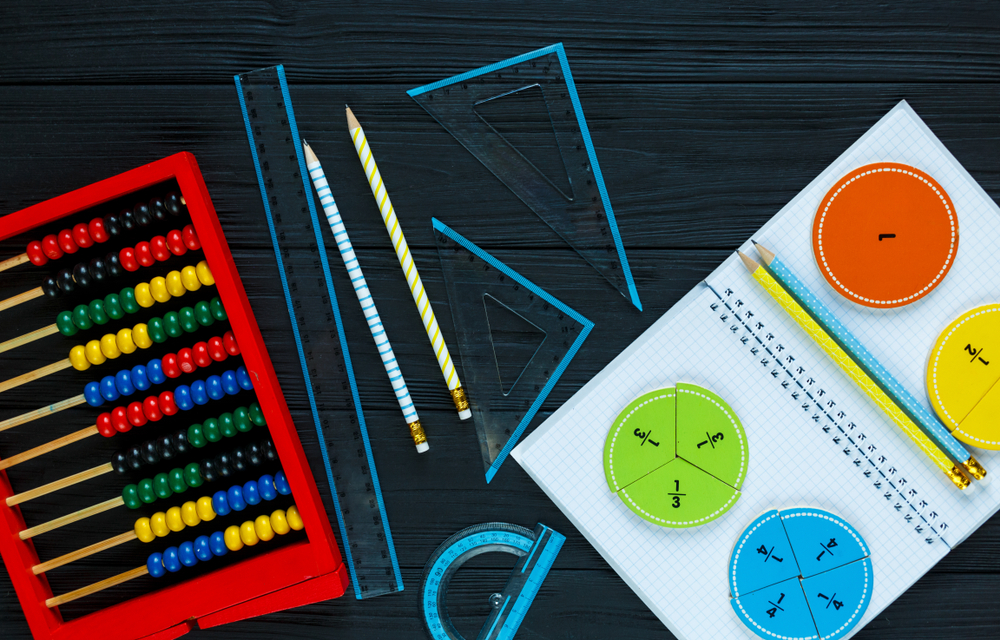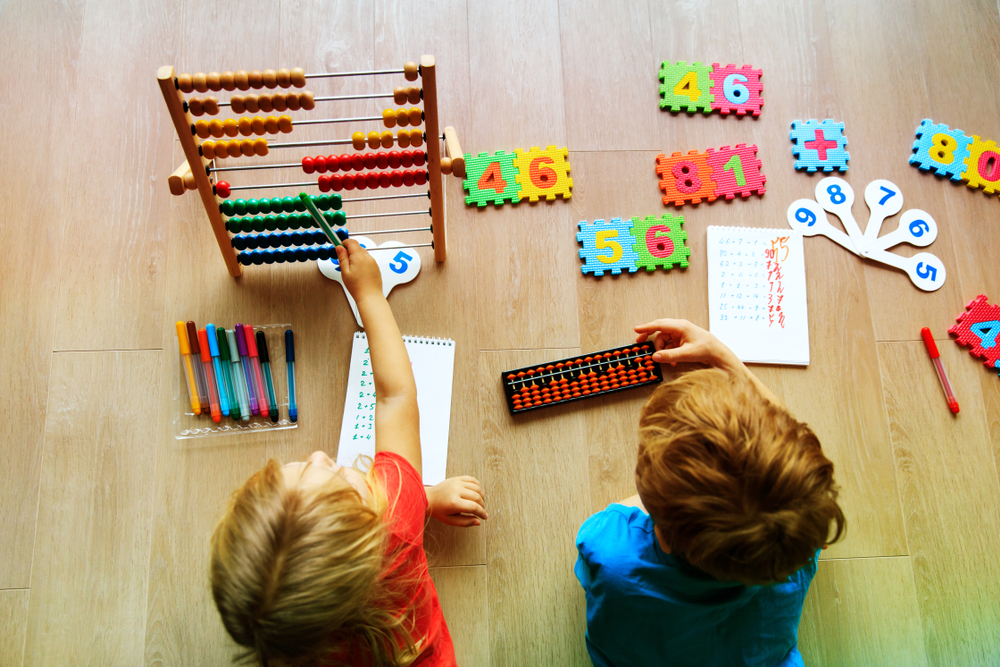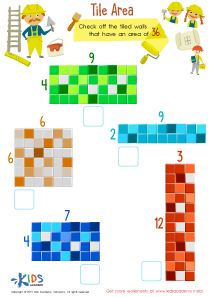Comparing Fractions Normal Numbers Worksheets for Ages 3-8
4 filtered results
-
From - To
Introducing our "Comparing Fractions Normal Numbers Worksheets for Ages 3-8," designed to make learning math fun and engaging for young minds. Tailored for early education, these worksheets help children grasp the concept of fractions and numbers through interactive activities and colorful illustrations. Each worksheet focuses on comparing simple fractions and normal numbers, enabling kids to build a strong mathematical foundation. Perfect for parents and teachers, these resources foster critical thinking and problem-solving skills. With Kids Academy, learning fractions becomes an enjoyable adventure, setting the stage for future academic success in math. Download and start exploring today!
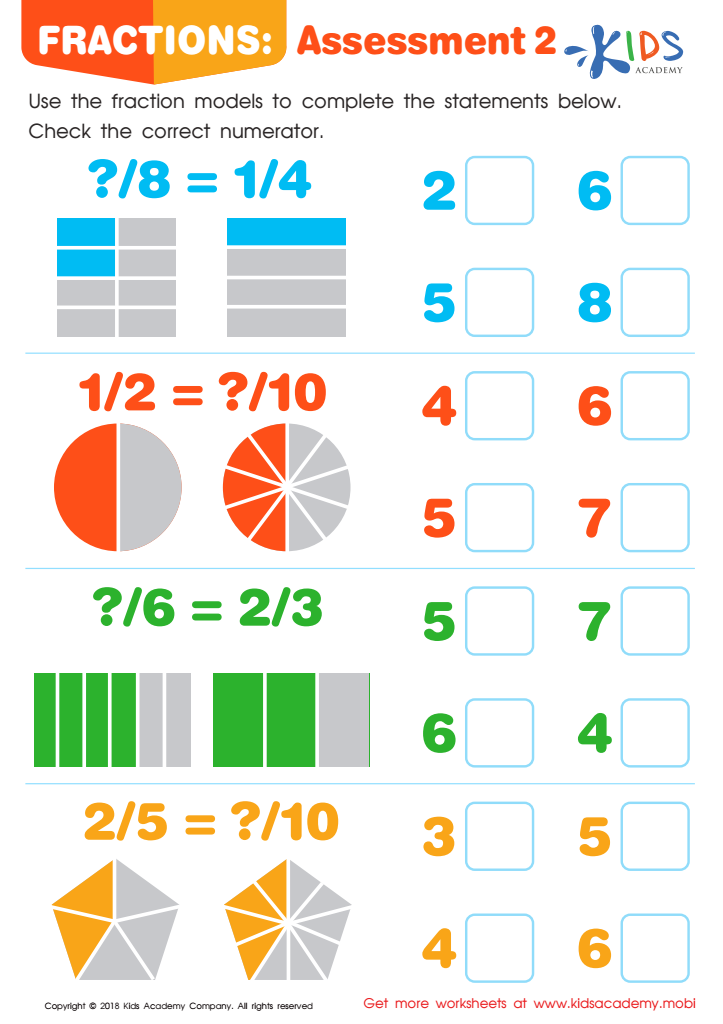

Fractions: Assessment 2 Worksheet
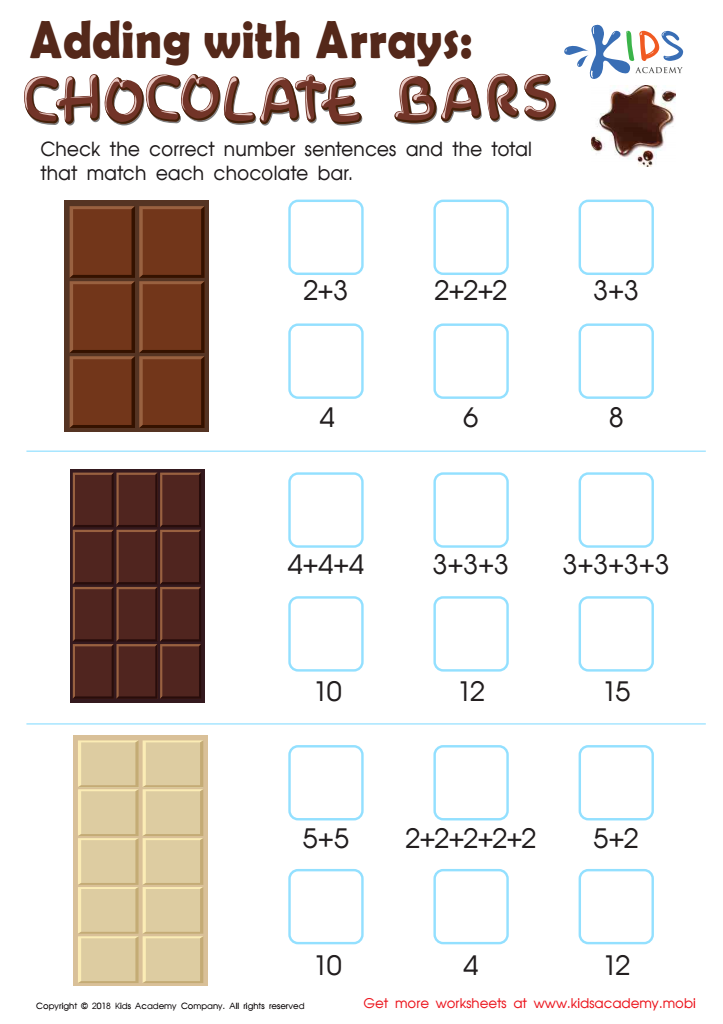

Adding with Arrays: Chocolate Bars Worksheet
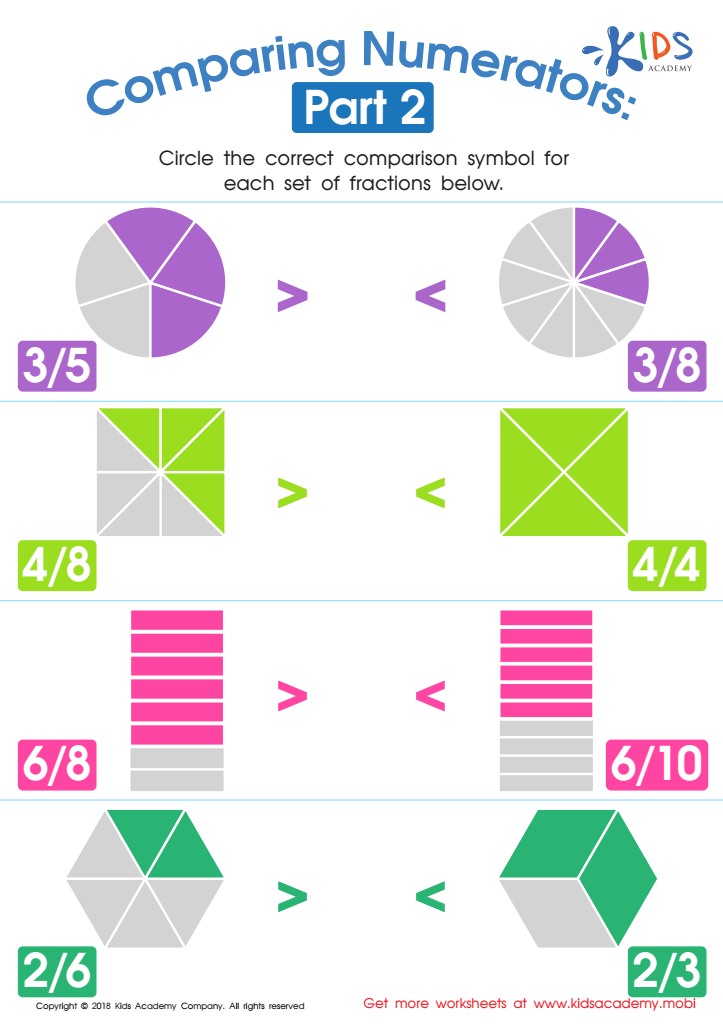

Comparing Numerators Part 2 Worksheet
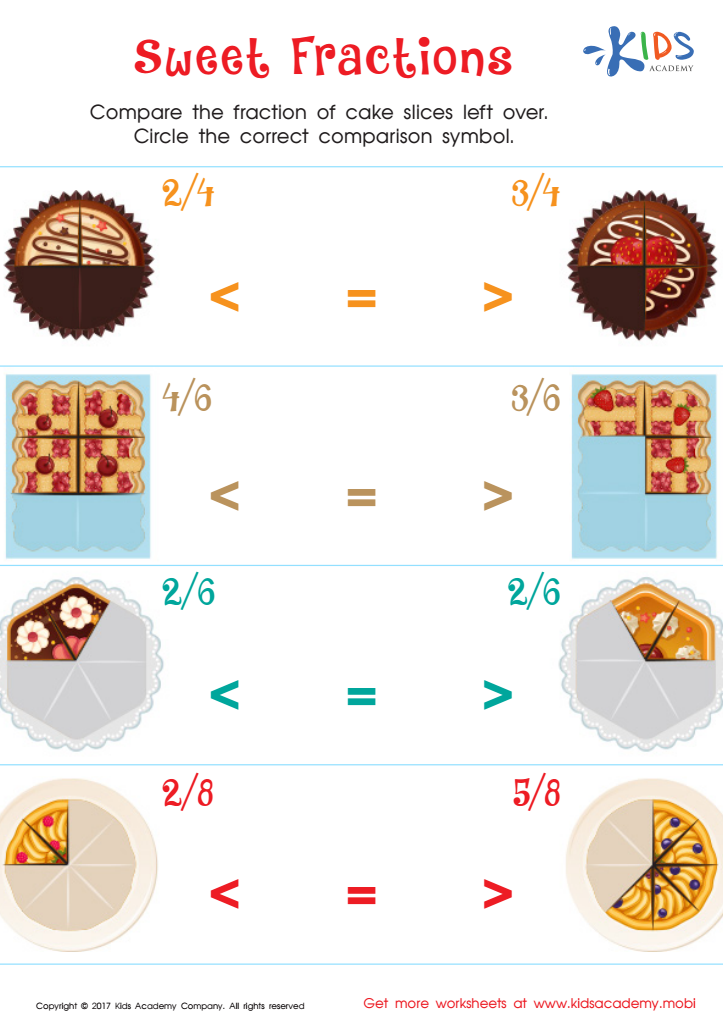

Compare Fractions Worksheet
Introducing children aged 3-8 to the concept of comparing fractions and normal numbers is crucial for building strong mathematical foundations. At this young age, kids are remarkably receptive to new ideas and are just beginning to form their numerical concepts. Teaching them how to compare fractions and regular numbers can be a gateway to more advanced mathematical skills and logical thinking.
Comparing fractions fosters a deep understanding of quantities and parts of a whole, essential for everyday reasoning. For example, understanding that 1/2 is greater than 1/4 helps children grasp that bigger portions mean more, a concept useful in various daily contexts like sharing food or dividing resources.
Furthermore, this knowledge bolsters confidence in tackling more complex topics in later grades, such as decimals, percentages, and ratios. It reinforces number sense, a critical component that influences overall academic success in mathematics. Skills learned at this stage, like comprehending how fractions relate to whole numbers, create a seamless transition to more complicated arithmetic operations.
Additionally, introducing these concepts early encourages critical thinking, problem-solving, and a positive attitude towards mathematics. By guiding children through the process of understanding and comparing different types of numbers, parents and teachers provide them with tools they will use throughout their education and life.
 Assign to My Students
Assign to My Students



